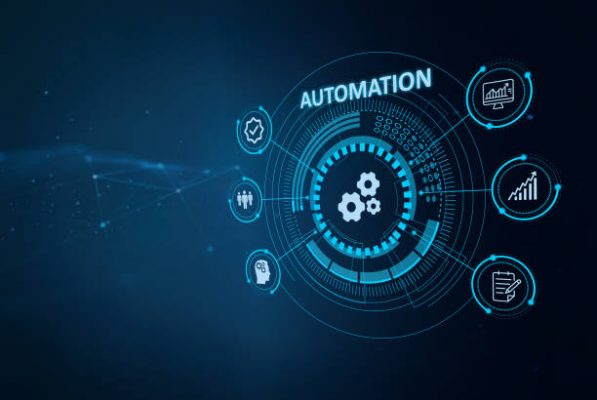
- April 17 2025
- SFI Solution Team
How AI and Automation Improve IT Operations (AIOps)
In the current rapidly evolving digital environment, IT operations face relentless demands to ensure high availability, exceptional performance, and smooth user experiences. The surge in data volume, increasing infrastructure complexity, and the necessity for swift incident resolution often render traditional IT operations insufficient. This is where AIOps-Artificial Intelligence for IT Operations-becomes essential.
AIOps leverages big data, machine learning (ML), and automation to optimize and simplify IT operations. By incorporating AI into IT processes, organizations can gain real-time insights, enhance decision-making, and automate repetitive tasks. In this blog, we will examine how AI and automation are transforming IT operations, the primary advantages of AIOps, practical use cases, and strategies for effective implementation.
What is AIOps?
AIOps stands for Artificial Intelligence for IT Operations, a term coined by Gartner to describe the use of AI and machine learning to automate and improve IT operations. AIOps platforms collect and analyze data from various IT environments in real-time, enabling organizations to detect anomalies, identify root causes, predict outages, and automate responses.
Key Components of AIOps
-
Data Ingestion : Aggregating data from various sources (logs, events, metrics, tickets).
-
Machine Learning & Analytics : Identifying patterns and predicting issues.
-
Automation : Executing predefined responses to incidents or anomalies.
-
Visualization : Providing actionable insights through dashboards and alerts.
-
Integration : Connecting with monitoring tools, ITSM platforms, and DevOps pipelines.
How AI and Automation Enhance IT Operations
1. Proactive Problem Detection
Traditional IT monitoring tools react to issues after they occur. AIOps, on the other hand, predicts and prevents problems before they affect end users. Machine learning models identify unusual patterns in data, flagging potential outages or performance issues.
2. Root Cause Analysis and Incident Management
Finding the root cause of an IT issue in a multi-layered environment is like finding a needle in a haystack. AIOps simplifies this by correlating data across systems and pinpointing the origin of the problem, reducing mean time to resolution (MTTR).
3. Intelligent Automation and Response
AIOps platforms can automate routine tasks such as restarting services, freeing up disk space, or rerouting traffic. Automation not only speeds up resolution but also ensures consistency and reduces human error.
4. Enhanced Observability
AIOps enhances observability by providing a holistic view of IT environments. It correlates data across applications, infrastructure, and networks, enabling IT teams to gain end-to-end visibility and context.
5. Capacity Planning and Optimization
AI-driven insights help organizations optimize resource allocation, forecast demand, and plan capacity efficiently. This leads to cost savings and ensures that infrastructure scales with business needs.
Key Benefits of Implementing AIOps
-
Faster Incident Resolution : Reduced MTTR through automated root cause analysis
-
Improved System Uptime : Proactive detection and resolution minimize downtime
-
Operational Efficiency : Automates repetitive tasks, freeing up teams for strategic initiatives
-
Better Decision-Making : Real-time insights and predictive analytics drive smarter decisions
-
Scalability : AI scales effortlessly with growing data and infrastructure complexity
Real-World Use Cases of AIOps
1. E-Commerce Platforms
Handle peak traffic loads and ensure website reliability with predictive scaling and anomaly detection.
2. Banking and Finance
Automate fraud detection, ensure compliance, and maintain uptime for critical applications.
3. Telecommunications
Monitor vast networks in real-time, proactively identify service issues, and optimize bandwidth usage.
4. Healthcare IT
Ensure the availability of patient data systems, automate alert management, and comply with regulatory requirements.
How to Implement AIOps in Your Organization
Step 1 : Assess Your Current IT Maturity
Understand your existing IT operations, tools, and workflows. Identify bottlenecks and automation opportunities.
Step 2 : Choose the Right AIOps Platform
Select a solution that integrates well with your existing tools (e.g., Splunk, ServiceNow, Dynatrace, Datadog).
Step 3 : Start Small, Scale Fast
Begin with a specific use case (e.g., log analysis or incident response) and gradually expand AIOps adoption.
Step 4 : Train Your Teams
Equip your IT staff with the knowledge and skills needed to work alongside AI-powered tools.
Step 5 : Continuously Optimize
Monitor results, gather feedback, and refine your AIOps strategy for continuous improvement.
Future of AIOps : What’s Next?
As IT environments become more dynamic and complex-especially with cloud-native, containerized, and serverless architectures-AIOps will become a foundational element of digital operations. The future holds even greater promise with the integration of generative AI, advanced natural language processing (NLP), and deeper automation capabilities.
Conclusion
AI and automation are not just buzzwords—they are transforming IT operations from reactive to proactive, from fragmented to unified. AIOps empowers businesses with intelligent, efficient, and scalable operations, enabling IT teams to deliver exceptional digital experiences while reducing operational burdens.
Whether you’re an enterprise managing massive data centers or a fast-growing startup scaling in the cloud, embracing AIOps is a strategic move toward the future of intelligent IT operations.
Previous Post